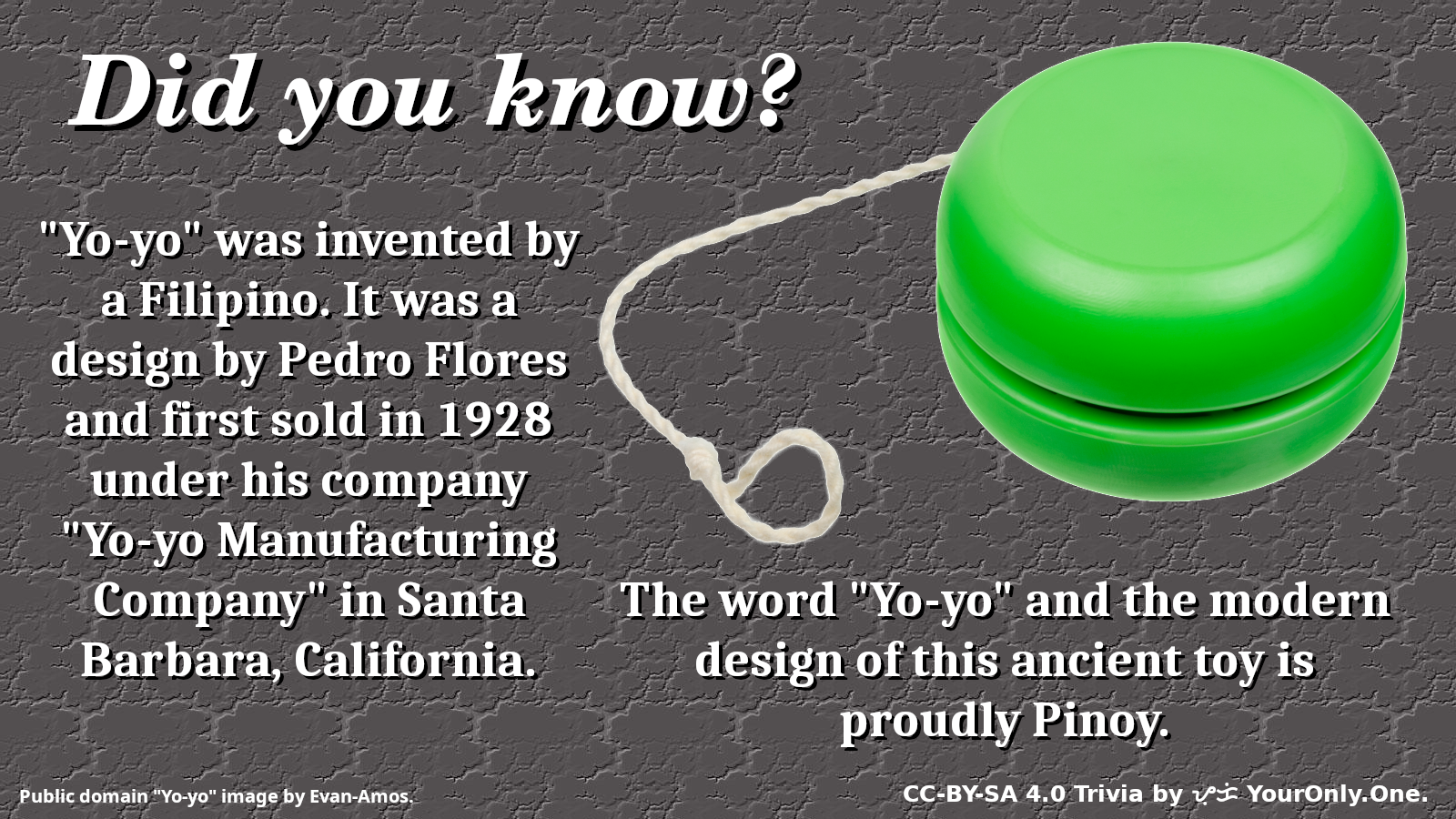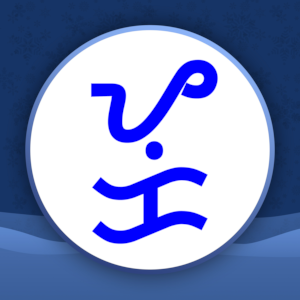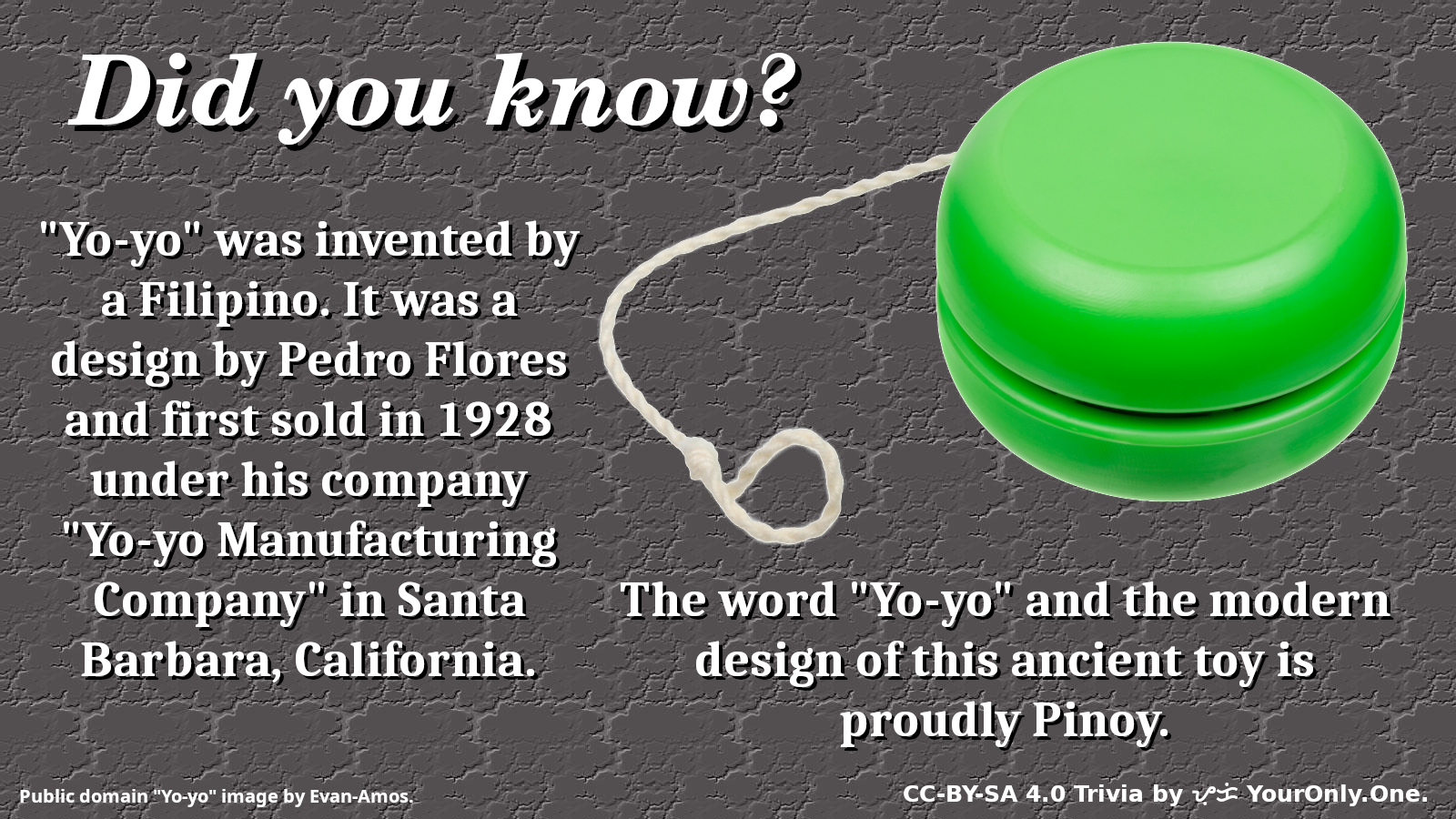
Did you know? “Yo-yo” was invented by a Filipino. It was a design by Pedro Flores and first sold in 1928 under his company Yo-yo Manufacturing Company in Santa Barbara, California. The word “Yo-yo” and the modern design of this ancient toy is proudly Pinoy.
Etymology and history
While the toy itself is ancient and is known by various names such as diabolo in China (approximately 1000 BCE) and bandalore in the 17th century, the modern word “Yo-yo” and the modern design of a yo-yo was pretty much recent.
The word “yo-yo” probably came from the Ilokano word “yóyo”, or a cognate word in a language in the Philippines.1
In 1928, Pedro Flores, a Filipino immigrant to the United States of America, opened the “Yo-yo Manufacturing Company” in Santa Barbara, California. The business started with a dozen handmade toys; by November of 1929, Flores was operating two additional factories in Los Angeles and Hollywood, which all together employed 600 workers and produced 300,000 units daily.2
The principal distinction between the Filipino design popularized by Flores and more primitive yo-yos is in the way the yo-yo is strung. In older (and some remaining inexpensive) yo-yo designs, the string is tied to the axle using a knot. With this technique, the yo-yo just goes back and forth; it returns easily, but it is impossible to make it sleep. In Flores’s design, one continuous piece of string, double the desired length, is twisted around something to produce a loop at one end which is fitted around the axle. Also termed a looped slip-string, this seemingly minor modification allows for a far greater variety and sophistication of motion, thanks to increased stability and suspension of movement during free spin.2
Yo-yo Trivia
Yo-yo Trivia by I’M YourOnly.One is licensed under CC-BY-SA 4.0 International.
Trademark
Pedro Flores was not the one who trademarked the name “Yo-yo” for this modern design of the ancient toy. It was registered as a trademark in 1932 by Sam Dubiner in Vancouver, Canada.2
However, in a trademark case in 1965, a federal court of appeal ruled in favor of the Royal Tops Company, the court explained that “yo-yo” had become a part of common speech and that Duncan (who bought Flores’s “Yo-yo” company) no longer had exlusive rights to the term.2
Conclusion
Whenever we use the word yo-yo, remember that it was originally a company name “Yo-yo Manufacturing Company” and originated from languages in the Philippines. In addition to that, whenever we see and/or play yo-yo, also remember that the modern design we are enjoying today was made by Pedro Flores in 1928 who provided jobs for 600 workers.
Merriam-Webster: History and Etymology for yo-yo ↩︎
Wikipedia: 《Yo-yo》; CC-BY-SA 3.0 Unported License ↩︎ ↩︎ ↩︎ ↩︎


